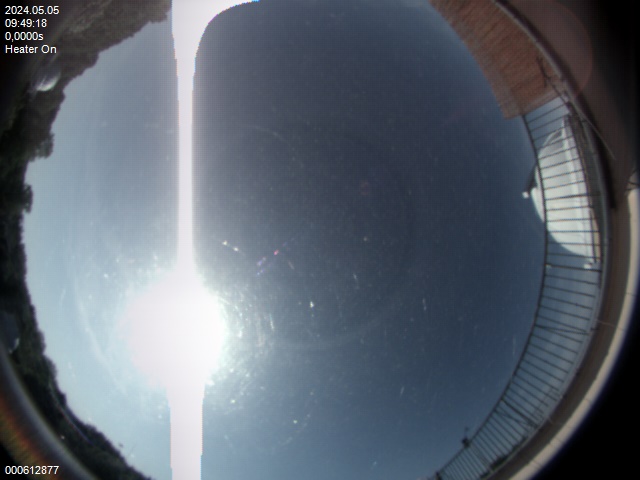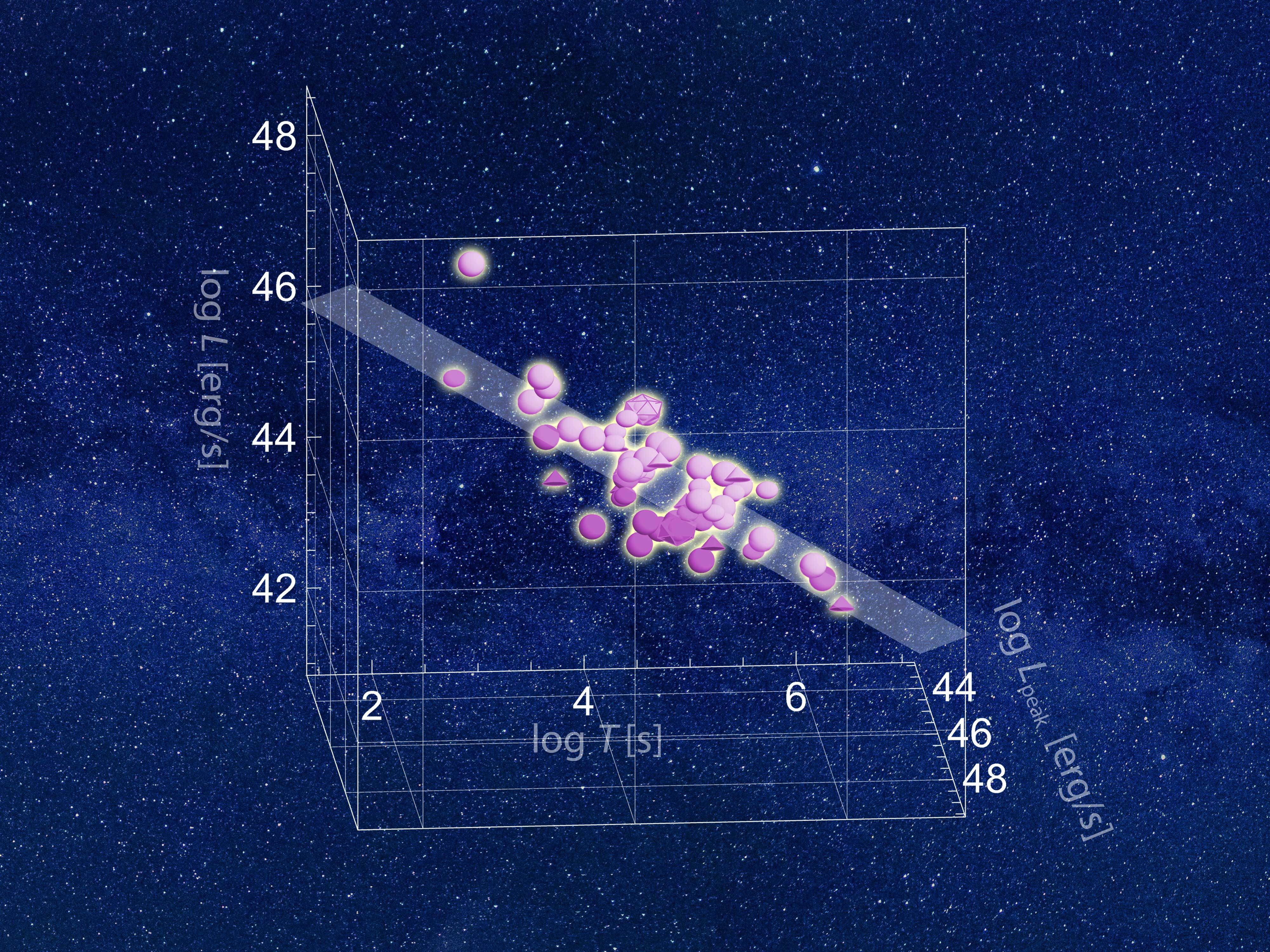Address: ul. Orla 171, 30-244 Kraków
Phone: 12 6238 620
For media & schools: press@oa.uj.edu.pl

Sky above: OAUJ, Kraków (live)

Be inspiration. Create the future.
S. Markowski - W obserwatorium
 Web Content Display
Web Content Display
Web Content Display
Web Content Display
 Navigation
Navigation
Navigation
Navigation
 Web Content Display
Web Content Display
Web Content Display
Web Content Display
Address: ul. Orla 171, 30-244 Kraków
Phone: 12 6238 620
For media & schools: press@oa.uj.edu.pl

Sky above: OAUJ, Kraków (live)

Be inspiration. Create the future.
S. Markowski - W obserwatorium
 Web Content Display
Web Content Display
Web Content Display
Web Content Display
A new method to exploit Gamma-Ray Bursts (GRBs), the most energetic explosions in the universe, as independent measurements of the Universe’s expansion rate has been discovered in optical wavelength by an international team of 23 researchers led by Maria Dainotti, NAOJ Assistant Professor.
The team analyzed 500 optical GRBs – the largest known sample of its kind comprised of data from the Subaru and RATIR Telescopes, among other ground-based facilities, and the Swift satellite – and showed that a specific population of GRBs (179 GRBs) showing optical plateaus, see left panel of Fig. 1, can be used as independent probes of cosmological distances.

Figure 1. GRB sample light curve in artistic visualization. (Credit: Maria Dainotti et al.)
Since GRBs are much brighter than the Supernovae (SNe) seen up to 11 billion light years, they can be seen from much farther distances (13.2 billion light-years). This allows a glimpse at distant GRBs, which paint an extraordinary picture of the “infancy” of our 13.8-billion-year-old Universe. Studying the very early Universe is critical to understanding how the first stars were born and how they evolved (cosmological evolution). One painstaking problem is that GRBs are difficult to standardize due to the variety of their features, which vary over several orders of magnitude even when GRBs are observed with a single instrument.
Crucially, in some cases, the Subaru Telescope was essential in determining the plateau emission because the data points observed by the Subaru were located in places of the light curves which corresponded to the temporal gaps of other Telescopes, either in the plateau emission or soon after it.
The sample of 179 GRBs are the GRBs that show the plateau emission differently from the other cases in which this peculiar trait is not shown. The different morphology of the light curves also pinpoints a different emission mechanism. GRBs with plateau emission most likely originated from fast-rotating millisecond neutron stars. Other theories explain the plateau emission as accretion onto the central engine, but this is less likely, because of the observed slope of the correlation.
The combination of the three parameters (the peak luminosity of the prompt emission, the luminosity at the end of the plateau, and its duration in optical wavelengths, see Figure 2) identifies a plane that works as the best distance indicator. The novel approach is that for the first time, this correlation survives the tests against selection biases. This relation is an extension of the same 3D correlation in X-rays also found by the same lead author in 2016 (see previous NASA press release Swift: News (nasa.gov)). The fundamental 3D correlation can measure the distance of GRBs. The key merit of the 3D optical relation is that for GRBs with contemporaneous measurements, an average of multiple distances can be calculated, and a more accurate measure will be achieved. More importantly, as a future cosmological probe to determine the cosmological parameters, according to simulations that we have performed in Dainotti et al. 2022c, the 3D optical correlation is even more efficacious for GRB cosmology compared to the X-ray fundamental plane.
The beginning of the plateau emission is different from the time of the prompt emission, which usually coincides with the so-called T90 duration, namely, the time in which the 90% of energy is emitted in the prompt emission.

Figure 2. The plane presented in the publication (artistic). (Credit: Maria Dainotti et al.)

Figure 3. Distribution of GRBs when plotted in a three-dimensional parameter space defined by "peak luminosity of GRB," "luminosity at the end of plateau," and "duration of plateau." The team showed that 179 of the examined GRBs are distributed on a certain plane. Using the three-dimensional correlations, it is possible to calculate unique brightnesses for these GRBs. (Credit: Maria Dainotti et al.)
Another key discovery is that the plateau does depend on the wavelength (chromatic). To reach this conclusion, the team compared X-rays and optical data for 89 GRBs with both X-rays and optical observations. The conclusion is that for the majority of cases, the plateau is not due to a geometric effect because the plateau is chromatic, so we can rule out that the end of the plateau could coincide with the jet break, which depends on the geometric effect of the observer’s viewing angle. This suggests that the 179 GRBs showing the plateau emission most likely originate from a fast-rotating neutron star. This is the first time in the literature this result has been confirmed for such a large sample of events, looking at the slope of the correlation which is still compatible with -1 within 2 σ. A steeper slope compatible with -1.2 would have led to a different conclusion, namely that the emission could have been induced by a prolonged activity of the inner engine accreting material onto a black hole.
These results appeared as Dainotti et al. “The Optical Two and Three-Dimensional Fundamental Plane Correlations for Nearly 180 Gamma-Ray Burst Afterglows with Swift/UVOT, RATIR, and the SUBARU Telescope” in the Astrophysical Journal Supplement Series on July 21, 2022. The team included Prof. Stanislaw Zoła and Kamil Kalinowski, a staff member and a student of the OAUJ/FAIS Faculty.